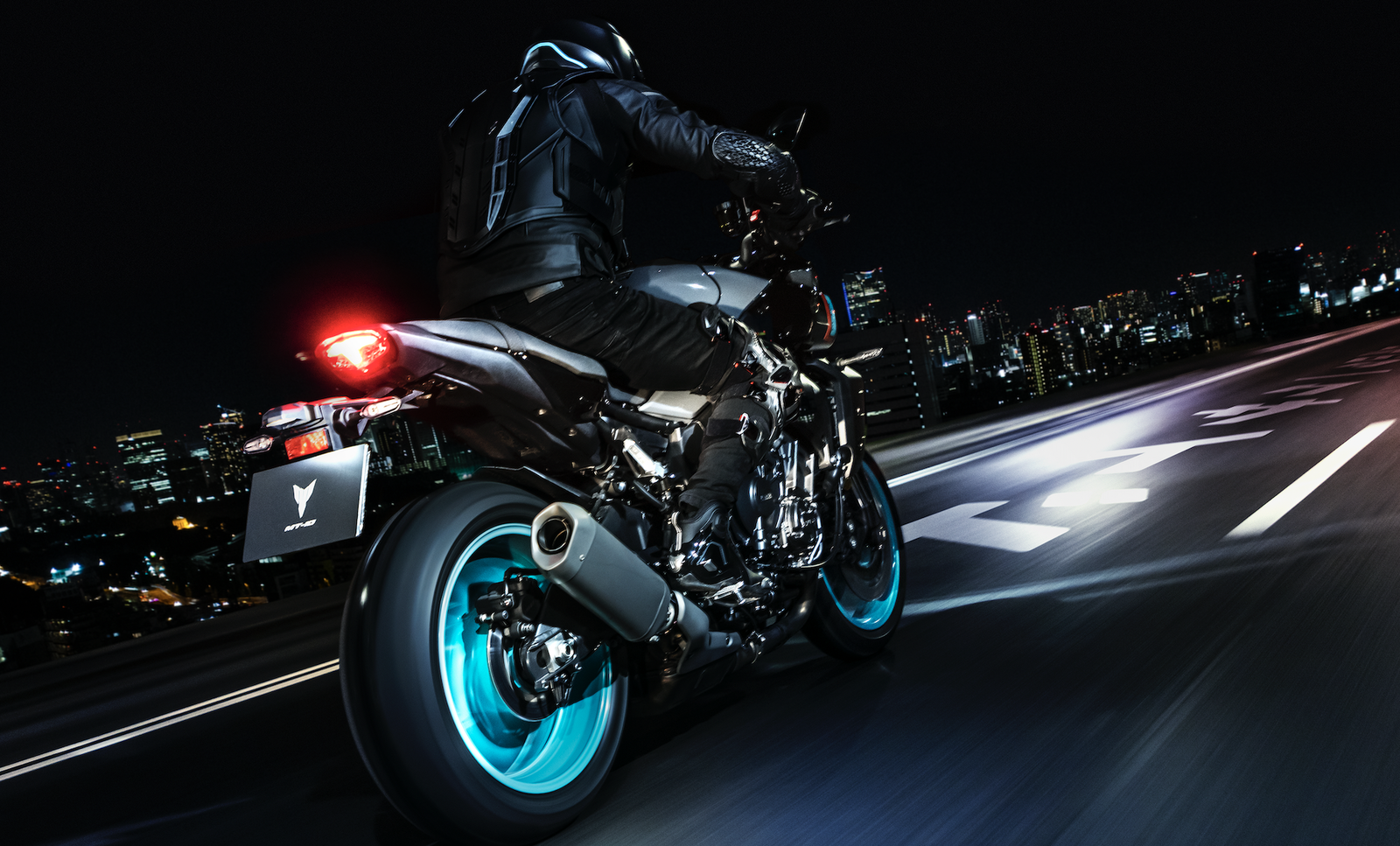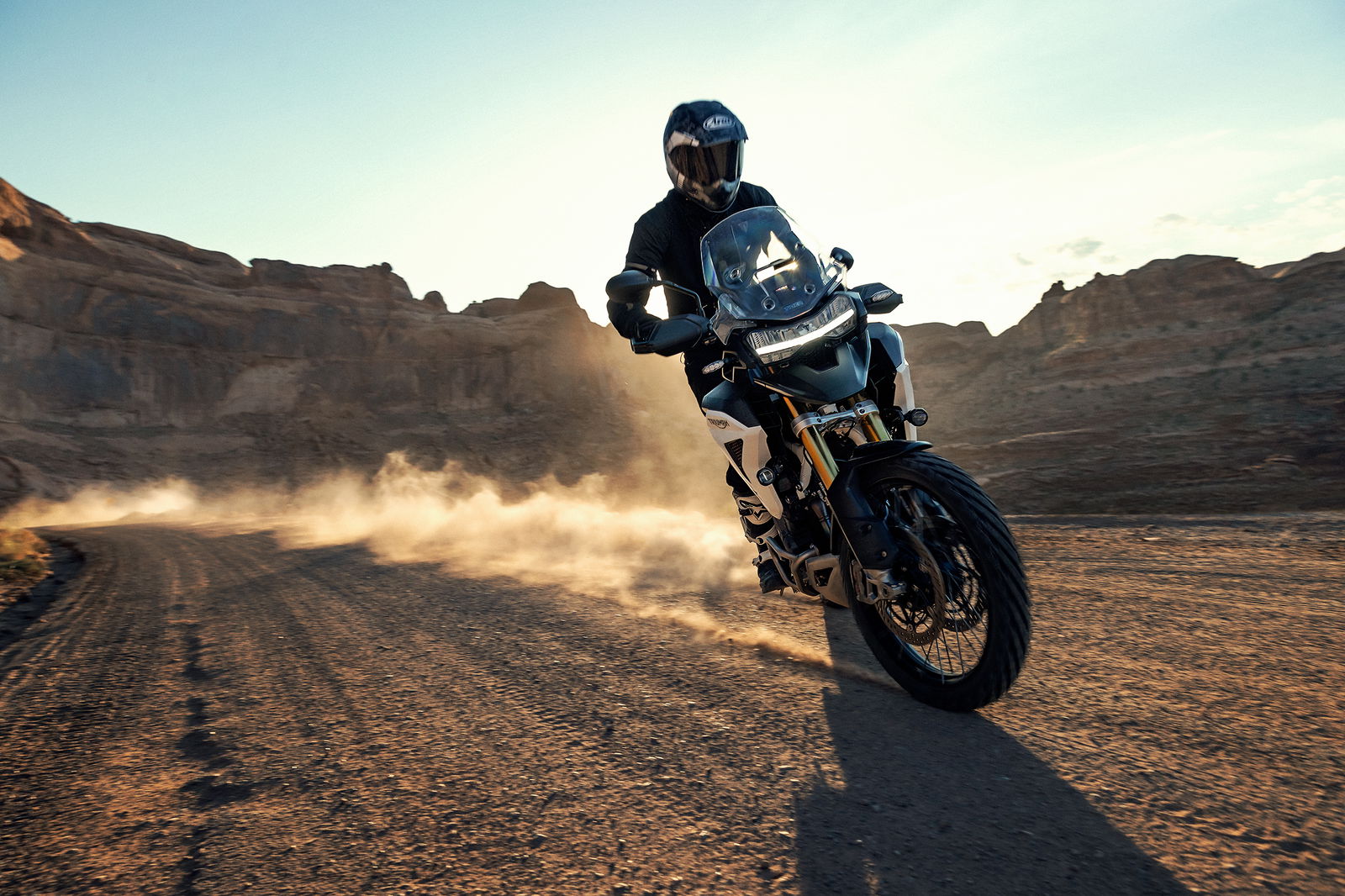Top tips for winter motorcycling | Staying safe, warm and moving
As the long nights and wet weather seem to be just around the corner, we thought we’d give you the top tips to getting through the dreaded winter commute

AS it seems like the summer is well and truly behind us, if this weekend is anything to go by anyway, thoughts start to turn to the dark, cold and dank months that lie ahead.
Commuting through winter on a bike doesn’t have to be all doom and gloom though, with the right preparation and some well-chosen clothing and kit, it can be almost as comfortable as it was a couple of month ago.
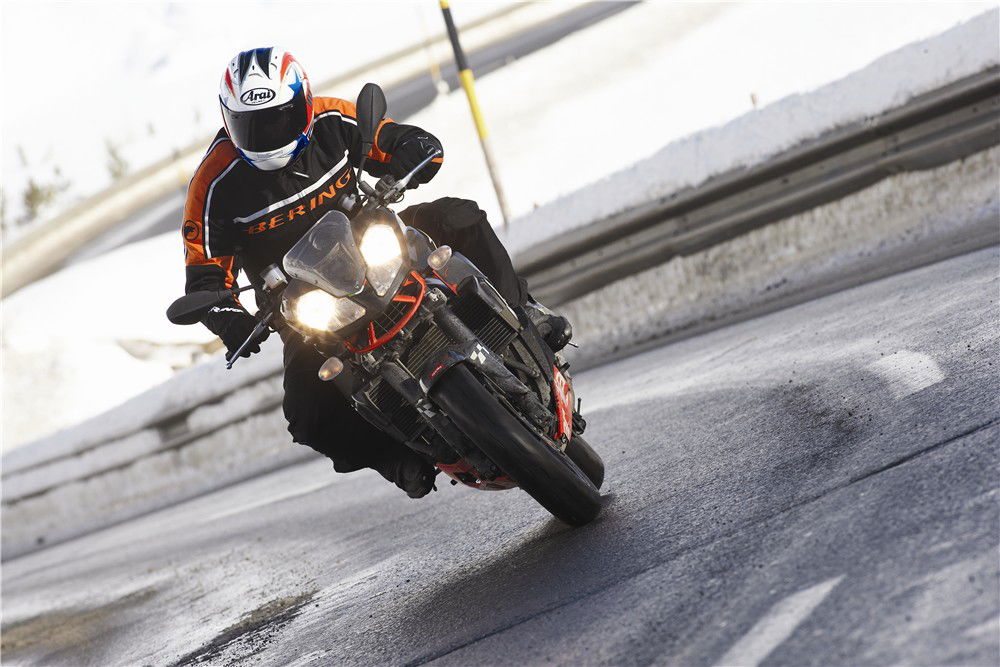
Winter motorcycle clothing
This almost goes without saying but, if you don’t have decent winter kit, you're doomed. If you’re cold, wet and suffering from numb hands and a cold core, you’ll be distracted, your reaction times will suffer and you’ll risk not being in proper control of your bike.
Buy the best kit you can afford and ditch the leathers – textile jackets and trousers will be most effective at keeping you dry and insulated. You want something with a thick, warm lining and look out for any technical materials that could fend off rain and road spray – a Gore-Tex membrane is always a good bet.
It’s the same story with boots and gloves – you want waterproof boots and gloves with a warm, thick lining that’ll keep your hands insulted against the wind and rain. It’s critical you keep your hands well protected from the cold because once you get numb fingers, your fine motor skill suffers and coming off the motorway with little feel for how much pressure you’re putting through the front brake lever is never a nice feeling. If you’re off on a long journey, carry a spare pair of gloves with you.
Base layers will help keep you warm under your clothes and jacket/trousers. Merino base layers are comfortable and good at trapping heat, and there are plenty of windproof leggings and long-sleeved tops out there that’ll give you an extra layer of defence against the chill in the air.
For the ultimate in toasty winter riding get some heated kit, that can either hook up to your bike or an external battery. There’s loads available – check out our heated kit guide here.

Winter dangers…
During winter you’ll be up against less hours of daylight, increased cloud cover and visibility problems caused by mist, fog and rain, so it’s more important than ever to make sure you’re visible. Car drivers will have their own problems with visibility too, thanks to misted up windows and when it gets really cold, there are plenty of dickheads out there who can only be bothered to scrape just enough ice/snow off their windscreens to see straight ahead, let alone see you.
Increase your visibility by investing in some winter riding kit that’s not completely black – jackets with fluorescent and reflective panels will help mark you out.
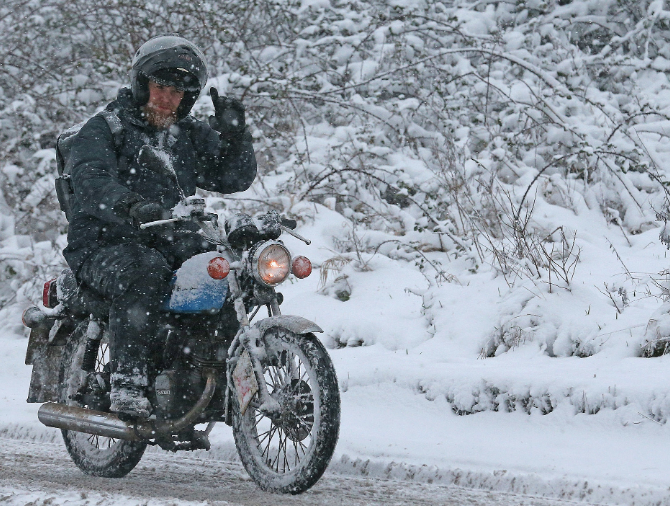
…and how to avoid them
To help maximize your chances of being seen, hi-viz is the way to go and if you’re deeply averse to donning a flouro jacket and helmet on the grounds that it’ll make you look uncool, winter is the time to accept that the benefit provided is probably worth it (and anyway, no one thinks you’re cool).
Your road positioning can also help when it comes to seeing and being seen so don’t sit too close the vehicle in front of you, instead position yourself so your front light can be easily noticed by the driver in front, don’t ride in the gutter, position yourself so that you can see through corners and use the space available in your lane to your advantage – moving around will make you more noticeable, give you better visibility and will signal your intentions to other road users.
Finally, if you’re the kind of rider who religiously uses a tinted visor, try using a clear one, or at least carry one with you. Get a pinlock insert too – they’re a godsend in winter and will prevent your visor fogging up thanks to your cold breath and the rain/moisture outside.
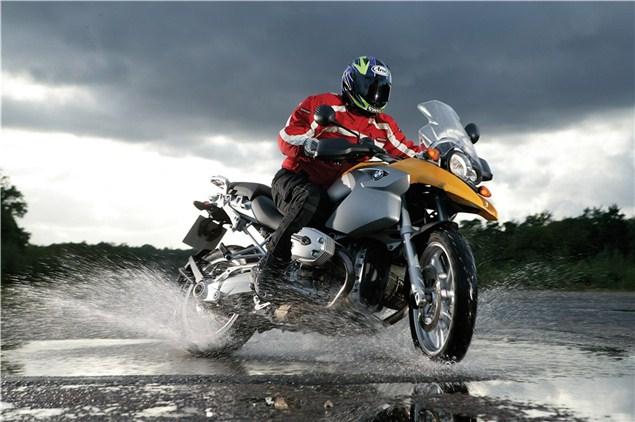
How to winterise your riding style
With greasy, wet roads, reduced visibility and the risk of ice during winter, riding smoothly, taking your time and planning becomes even more important. That means being progressive and gentle when it comes to applying power and getting on the brakes. Even on bikes with ABS and traction control, you want to avoid jabbing at the brakes giving it a handful of whiskey throttle. Slow. Things. Down. And be patient. Leave yourself more room to think and react – dropping back from the car in front will give you a few more precious seconds on a cold, slippery surface.
Think about the road ahead – there could be debris, puddles or potholes in the way and you want to give yourself enough time to find a safe way past them. A set of sticky fast road/track rubber might be just the thing for a sunny Sunday morning blast in July, but they won’t cut it in winter because they’ll have little chance of properly warming up and won’t perform at their best when it’s cold and wet. For winter, fit some dedicated road tyres that’ll work in a wide range of conditions, heat up and provide trustworthy grip. Sports touring rubber like Metzeler Roadtec 01s, Michelin Pilot Roads or Pirelli Angel GTs are all a safe bet and should provide consistent performance and longevity during the winter. Once you’ve got the right rubber fitted, be sure to regularly check your pressures are correct.
British track days might sound like a dead-end in winter – but they still go on. And best of all, they are really cheap, so you can afford to lose the odd one or two to snow. If you're prepared for the cold and wet, you can still make big steps forward in your riding. Get an older, cheaper track bike (not like those pictured), load it up with crash protection, and shell out for a set of spare wheels with wet-weather tires on. With a rainproof oversuit over your leathers and some thermals underneath, you'll be snug (ish), while you learn more and more about grip, traction, braking, body positioning, weight transfer, and track positioning.
